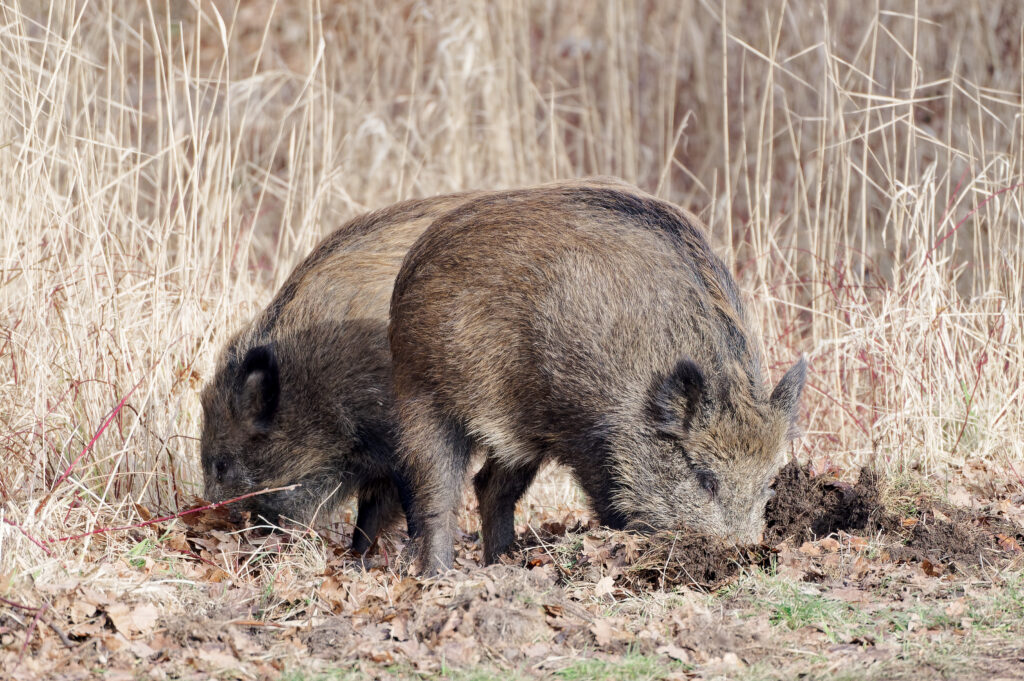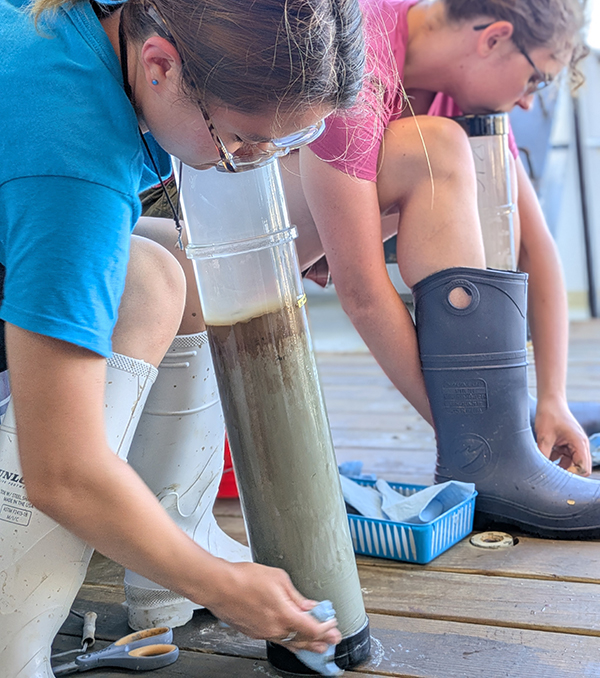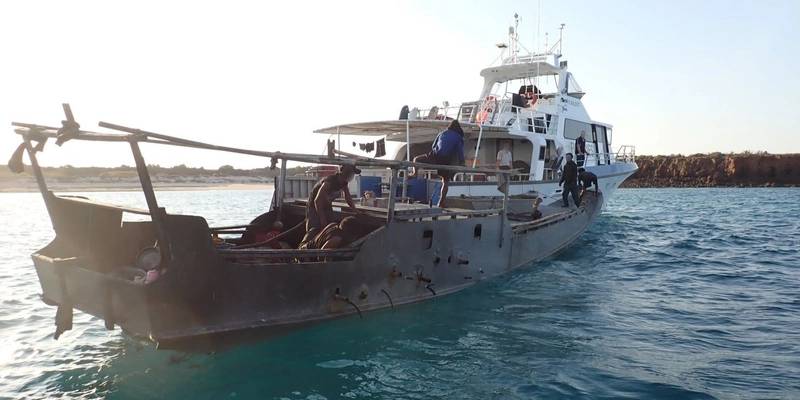New study reveals coral reef food webs are more siloed and vulnerable than previously understood – The University of Rhode Island

Report on Tropical Reef Food Web Vulnerability and Sustainable Development Implications
Introduction: Reassessing Ecosystem Resilience
A study conducted by the University of Rhode Island’s Graduate School of Oceanography reveals that tropical reef food webs are significantly more fragile than previously understood. The research indicates that these ecosystems, vital for global biodiversity, are not highly interconnected systems but are instead composed of specialized, narrow energy pathways. This finding has profound implications for achieving the United Nations Sustainable Development Goals (SDGs), particularly those related to marine conservation and climate action.
Key Findings: Specialized Energy Pathways in Marine Ecosystems
The investigation utilized compound-specific stable isotope analysis of amino acids (CSIA-AA) to trace nutrient flows. The study focused on three common snapper species, previously thought to be opportunistic predators. The results demonstrated a remarkable degree of specialization, challenging long-held ecological assumptions.
- Compartmentalized Food Chains: The flow of energy from primary producers to predators is highly compartmentalized into “vertical silos.” Each species relies on a distinct and isolated food chain.
- Specific Predator-Prey Links: The dietary habits of the snapper species studied were found to be unexpectedly specialized, with each species tied to a unique primary production source.
- Lutjanus kasmira: This species was found to feed almost exclusively within a food web based on phytoplankton in the water column.
- L. ehrenbergii: This species is dependent on a food web originating with macroalgae on the seafloor.
- L. fulviflamma: This species primarily consumes prey from within a coral-based food web.
Implications for SDG 14: Life Below Water
These findings directly impact the strategies required to meet the targets of SDG 14 (Life Below Water). The assumed resilience of coral reefs, based on high species diversity, is now in question. The siloed nature of the food webs means that these ecosystems are highly vulnerable to disruption.
- Increased Vulnerability: The loss of a single primary producer, such as coral due to bleaching or macroalgae due to pollution, can lead to the collapse of an entire food chain that depends upon it.
- Conservation Imperatives: Conservation efforts must evolve beyond protecting individual species to safeguarding the integrity of these distinct energy pathways. This requires a more nuanced approach to marine resource management to conserve and sustainably use ocean ecosystems.
Interconnected Risks for Global Sustainability Goals
The fragility of these reef systems creates cascading risks that affect multiple SDGs.
Connections to Climate, Food, and Consumption
- SDG 13 (Climate Action): The study underscores the urgent need for climate action. Climate change-driven events, such as ocean warming and coral bleaching, are identified as primary threats that can fracture these specialized food chains, leading to irreversible biodiversity loss.
- SDG 2 (Zero Hunger): Coral reefs support fisheries that are critical for the food security of millions. The research reveals that the stability of these fisheries is precarious, as the collapse of a single energy silo could decimate populations of commercially important fish like snapper.
- SDG 12 (Responsible Consumption and Production): The threat of overfishing is magnified by this new understanding. Unsustainable fishing practices can disrupt a specific food chain, with more severe consequences than previously thought, highlighting the need for responsible management of marine resources.
Methodological Innovation and Partnerships for the Goals
The research was made possible by innovative scientific methods and collaboration, reflecting the principles of several SDGs.
Advancements Supporting SDG 9 and SDG 17
- SDG 9 (Industry, Innovation, and Infrastructure): The use of the cutting-edge CSIA-AA technique represents a significant scientific innovation. Such advanced analytical tools are crucial for developing a deeper understanding of complex ecological problems and informing effective, evidence-based policy.
- SDG 17 (Partnerships for the Goals): This long-term study, which utilized samples collected 15 years prior, involved collaboration between multiple institutions, including the University of Rhode Island, the Woods Hole Oceanographic Institution, and King Abdullah University of Science and Technology. This exemplifies the importance of global partnerships in advancing scientific knowledge to address complex sustainability challenges.
SDGs Addressed in the Article
SDG 14: Life Below Water
This is the most central SDG to the article. The research focuses on the health, biodiversity, and functioning of tropical coral reef ecosystems. The article explicitly discusses the fragility of these marine environments, the specialized nature of their food webs, and their vulnerability to threats like “climate change, overfishing, or bleaching.” The entire study aims to “conserve and sustainably use the oceans, seas and marine resources,” which is the core mission of SDG 14.
SDG 13: Climate Action
The article directly connects the health of reef ecosystems to climate change. It states that if a primary producer is “disturbed by climate change… or bleaching, it can fracture an entire food chain.” This highlights the need to take urgent action to combat climate change and its impacts, which is the goal of SDG 13. The study’s findings on reef fragility underscore the vulnerability of these ecosystems to climate-related hazards.
SDG 9: Industry, Innovation, and Infrastructure
The article emphasizes the role of scientific innovation in understanding ecological problems. It details the use of a “cutting-edge technique,” Compound-Specific Stable Isotope Analysis of Amino Acids (CSIA-AA), which McMahon’s lab helped pioneer. The text notes that the lab’s goal is to “develop tools that solve vexing ecological problems.” This aligns with the goal of fostering innovation and enhancing scientific research.
SDG 2: Zero Hunger
While not the primary focus, the article connects to SDG 2 through its discussion of “food security” and fisheries. The study investigates snapper species, which are predators “high in the food chain” and part of local fisheries. The finding that their food webs are fragile has direct implications for the sustainability of these fish stocks as a food source. A collapse in a primary producer could impact the availability of these fish, affecting food security for communities that rely on them.
SDG 17: Partnerships for the Goals
The article demonstrates the importance of collaboration in scientific research. The study was a multi-institutional effort, with samples collected during McMahon’s time at “King Abdullah University of Science and Technology” and analyzed at URI’s “Graduate School of Oceanography” and “partner labs including the Woods Hole Oceanographic Institution.” This international partnership is a clear example of strengthening the means of implementation for sustainable development.
Identified SDG Targets
-
Target 14.2: Sustainably manage and protect marine and coastal ecosystems.
The article’s core finding is that “food webs on tropical reefs are more fragile than we once thought.” It reveals that energy flows in “highly compartmentalized” or “siloed” pathways, which challenges “long-held assumptions that coral reefs are naturally resilient.” This knowledge is fundamental to developing effective strategies to manage and protect these ecosystems from “significant adverse impacts.”
-
Target 14.4: End overfishing and implement science-based management plans.
The study focuses on three common snapper species, which are “abundant predators” and often targeted by fisheries. The finding that these species have highly specialized diets means that threats to their specific food sources (phytoplankton, macroalgae, or coral) could devastate their populations. This scientific insight is crucial for developing “science-based management plans” that account for the entire food chain, not just the target species, to prevent overfishing and stock collapse.
-
Target 14.a: Increase scientific knowledge and research capacity to improve ocean health.
The entire article is a testament to this target. It describes the development and application of a novel method (CSIA-AA) to “unlock a metabolic history of organisms” and “reveal patterns in the food web we couldn’t see before.” The work of McMahon’s lab to “develop tools that solve vexing ecological problems” directly contributes to increasing scientific knowledge and research capacity for the benefit of ocean health.
-
Target 13.1: Strengthen resilience and adaptive capacity to climate-related hazards.
The study provides new insight into the vulnerability of coral reefs to climate change. By demonstrating that the loss of a single primary producer due to “climate change, overfishing, or bleaching” can “fracture an entire food chain,” the research helps identify specific weaknesses in the ecosystem. This knowledge is the first step toward strengthening the resilience of these vital marine habitats.
Implied Indicators for Measuring Progress
-
Ecosystem Resilience and Health:
The article implies that the degree of “siloing” or compartmentalization in a reef’s food web can be used as an indicator of its fragility. A less siloed, more interconnected food web would indicate greater resilience. Other mentioned indicators of ecosystem health (or lack thereof) include the extent of coral bleaching and the overall species biodiversity.
-
Sustainability of Fish Stocks:
The health and abundance of specific primary producers (phytoplankton, macroalgae, coral-based sources) are implied as crucial indicators for the long-term sustainability of the snapper populations that depend on them. Monitoring these foundational elements of the food web is presented as essential for managing the fishery.
-
Advancement in Scientific Research:
The development and application of new scientific tools, such as the “novel methods: CSIA-AA” described in the article, serve as a direct indicator of progress. The number of scientific publications (like the one cited in the article) and the establishment of international research collaborations are also implied indicators of growing scientific capacity.
SDGs, Targets, and Indicators Analysis
| SDGs | Targets | Indicators (Mentioned or Implied in the Article) |
|---|---|---|
| SDG 14: Life Below Water |
14.2: Sustainably manage and protect marine and coastal ecosystems.
14.4: End overfishing and implement science-based management plans. 14.a: Increase scientific knowledge and research capacity. |
– Degree of food web compartmentalization (“siloing”) as a measure of ecosystem fragility. – Health and biodiversity of coral reef systems. – Status of snapper populations and the health of their specific food sources (phytoplankton, macroalgae, coral). – Development and application of new scientific tools like CSIA-AA. |
| SDG 13: Climate Action | 13.1: Strengthen resilience and adaptive capacity to climate-related hazards. | – Vulnerability of siloed food chains to climate shocks like bleaching. |
| SDG 9: Industry, Innovation, and Infrastructure | 9.5: Enhance scientific research and encourage innovation. | – Creation and use of “cutting-edge” analytical techniques (CSIA-AA) to solve ecological problems. |
| SDG 2: Zero Hunger | 2.4: Ensure sustainable food production systems. | – Resilience of fisheries (e.g., snapper) based on the stability of their specialized food webs. |
| SDG 17: Partnerships for the Goals | 17.6: Enhance international cooperation on science, technology and innovation. | – Number of international research collaborations (URI, Woods Hole, King Abdullah University). |
Source: uri.edu

What is Your Reaction?
 Like
0
Like
0
 Dislike
0
Dislike
0
 Love
0
Love
0
 Funny
0
Funny
0
 Angry
0
Angry
0
 Sad
0
Sad
0
 Wow
0
Wow
0











































































